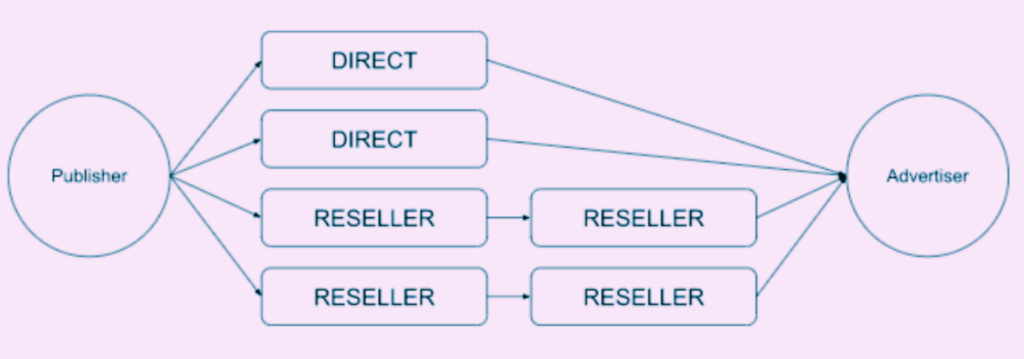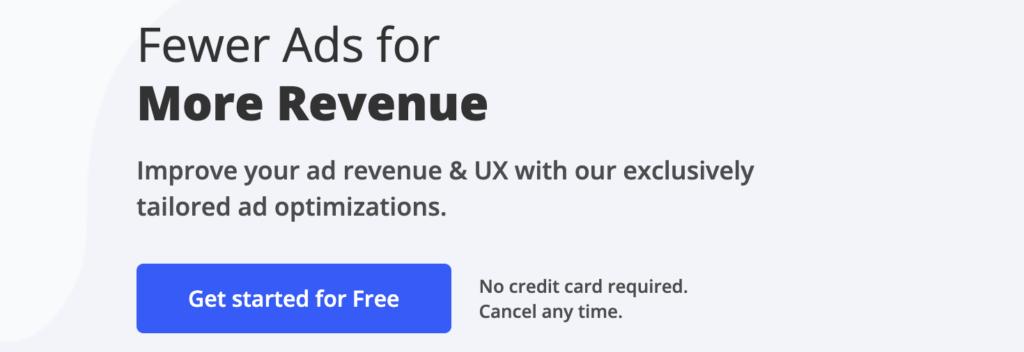The word “bidflation,” by itself, isn’t all that interesting. But when you understand what bidflation really is — and how it’s costing some major publishers millions of dollars in lost revenue — you need to pay attention.
“Higher impressions aren’t necessarily aligned with higher revenues – and that’s bidflation.” In the real world, the opposite happens.
This blog post breaks down what Bidflation is and how publishers can stop losing money from it.
Understanding the Programmatic Auction to address Bidflation
To get deeper into this topic, you’ll need to get your basics brushed up regarding the mechanics of a programmatic auction:
- When a user visits a publisher’s website, an auction gets triggered for ad display to occur.
- Auction data funnels through SSPs i.e. Supply Side Platforms.
- SSPs then move on to selling the ad slot to either a Demand Side Platform (DSP), direct advertisers, or another SSP.
- If the ad slot is sold from SSP to DSP or direct advertiser, the entry is labeled ‘DIRECT’ in ads.txt. In case, if it’s sold to another SSP it is labeled ‘RESELLER.’
- As a result of the auction, the highest bidder wins the placement, and the other buyers try winning other ad slots.
- The SSP passes the winner’s ad to the publisher who then renders the ad & triggers an impression at the set price.
- The ad is displayed to the user in seconds.
What is Bidflation?
Bidflation is when the same ad slot is auctioned and sold to the same advertiser or demand side partner more than once in the same auction. It is one of the reasons why publishers are not getting as much money as they used to, and it has all happened within the last few years.
The buyers are told there are 2 or more ad slots available when there’s only one ad slot available. This happens because initial participants are selling slots to the same bidder in the auction.
On average, publishers lose million YOY (year over year) to Bidflation. These losses are never recovered because Bidflation distorts the market and has a direct effect on real-time bidding (RTB) prices across all advertising platforms. It inflates prices for buyers and reduces yields for sellers by creating artificial competition where none actually exists.
The following diagram shows bidflation behind the scenes:

There is one ad slot and one ad opportunity from the Publisher’s perspective, but from the advertiser’s perspective, there are four ad slots and ad opportunities. Here, bidflation is four times and the bidder may place multiple bids. This means that out of every four times an advertiser bids on an impression, they will win one ad slot.
The problem with this is that advertisers are most likely to bid on the largest, most valuable impression. However, publishers have little choice but to select the highest bidder because they can’t risk having the ad server leave an ad slot empty, or there won’t be enough inventory to sell.
For publishers themselves, bidflation can be a real issue because it eats into their profits since they’re not getting as much money from advertisers.
The Impact of Bidflation & how publishers are burning money
To increase the bid-to-win ratio, advertisers will initially raise bid prices. Since there is only one slot available, they cannot win it more than once, so once they realize that increasing prices won’t affect their bid-to-win ratio, the bidder will simply reduce how much they bid on the ad slot.
As a result, publishers will see their impressions stagnate and eventually decline. The only way for publishers to make money is if there are more impressions available, but this isn’t possible when advertisers are bidding more for the same number of ad slots.
How can Publishers combat Bidflation?
Look into your Ads.txt file and avoid reseller entries as much as possible! A publisher’s Ads.txt authorizations should reduce bidflation instead of amplifying it.
Publishers should dig deep into the advertiser’s ad slot bidding funnel. Bidflation does not only impact publishers but it affects everyone involved in the ad supply chain including DSPs, SSPs, advertisers, etc.
In order for ad systems to process bid requests that can’t be filled, an infrastructure cost is incurred. These costs ultimately go from publishers’ wallets.
A good strategy for tech-savvy publishers is to switch to better ad management partners and ensure that they are not bidding for the same advertisers or selling to each other.
Taking steps to stop bidflation at the source, MonetizeMore has helped thousands eliminate redundant adtech costs & maximize publishers’ revenue.
It’s time to stop losing money due to bidflation now! Click here to become more profitable!
source https://www.monetizemore.com/blog/bidflation-publishers-make-money




0 Comments